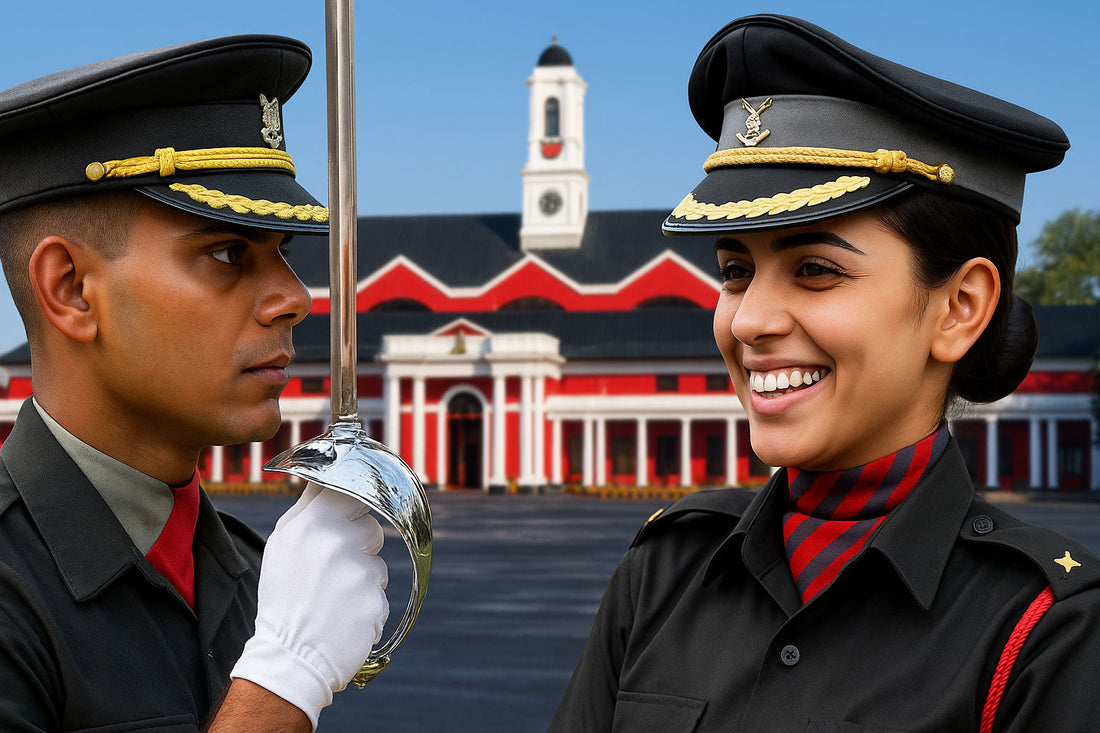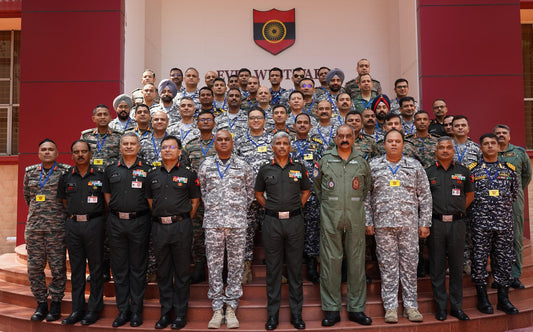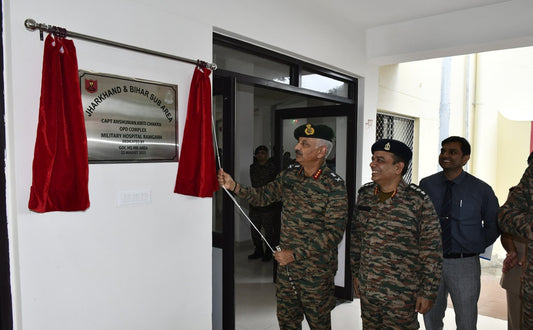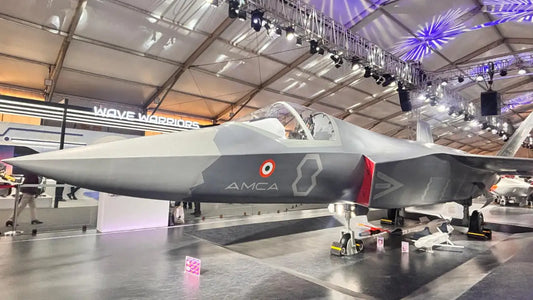OTA vs IMA: Check the Main Difference between OTA and IMA

In the realm of India's defence forces, aspiring officers often find themselves at a crossroads when deciding between the Officers Training Academy (OTA) and the Indian Military Academy (IMA). These institutions represent pivotal gateways into the Indian Army, each offering unique pathways to leadership roles.
Understanding the distinctions between OTA and IMA is essential for defence aspirants, as it influences career trajectories, service commitments, and personal fulfillment. This comprehensive guide explores the core differences, eligibility, training, and more, helping you make an informed choice in your journey toward serving the nation.
Introduction
The Officers Training Academy (OTA) and the Indian Military Academy (IMA) are premier training establishments of the Indian Army, dedicated to molding civilians into competent military officers. OTA, primarily located in Chennai with an additional facility in Gaya, focuses on Short Service Commission (SSC) officers, providing a shorter yet intensive training regimen suitable for those seeking a temporary but impactful stint in the armed forces. In contrast, IMA, situated in Dehradun, Uttarakhand, is renowned for training Permanent Commission (PC) officers, emphasizing long-term careers in the Army.
These academies hold immense significance in India's defence ecosystem. OTA has been instrumental in commissioning thousands of SSC officers, including women since 1992, contributing to diverse roles in logistics, administration, and support services. IMA, established in 1932, has produced over 60,000 officers, many of whom have risen to top leadership positions, embodying the motto "Valour and Wisdom."
For aspirants, comparing OTA vs IMA is crucial because it aligns with individual goals whether one prefers a flexible service term with options for civilian careers post-tenure or a lifelong dedication to military service. This decision impacts not only professional growth but also lifestyle, family considerations, and retirement prospects. In an era where the Indian Army emphasizes inclusivity and modernization, understanding these differences empowers candidates to pursue the path that best suits their aspirations.
Also Read: OTA Chennai vs IMA Dehradun - Which is Best for You?
Overview of OTA
The Officers Training Academy (OTA) serves as a vital institution for training Short Service Commission officers in the Indian Army. Established in 1962 amid the Indo-China conflict, OTA was initially set up to address the urgent need for additional officers. Its primary campus is in Chennai, Tamil Nadu, with a secondary facility in Gaya, Bihar, catering to specific entries like Technical Entry Scheme (TES) and Special Commissioned Officers (SCO). The Chennai academy, spanning over 700 acres, is equipped with state-of-the-art facilities, including simulation centers, firing ranges, and leadership development modules.
OTA's history is marked by its evolution into a gender-inclusive academy. It began commissioning women officers in 1992, making it the first in India to do so for non-medical roles. Entry schemes for OTA include the Combined Defence Services (CDS) examination for graduates, NCC Special Entry for National Cadet Corps certificate holders, and SSC Technical entries for engineering graduates.
Training at OTA lasts 49 weeks, focusing on physical fitness, tactical skills, and leadership essentials to prepare cadets for immediate operational roles. Eligibility criteria require candidates to be unmarried graduates aged 19-25 years, with both men and women eligible. Physical standards include a minimum height of 157 cm for men and 152 cm for women, along with medical fitness.
The core purpose of OTA is to produce SSC officers who serve for 10-14 years, with options for extension or conversion to Permanent Commission based on performance and vacancies. This focus on SSC allows officers to gain valuable military experience while retaining flexibility for post-service careers in sectors like corporate management, civil services, or entrepreneurship.
Overview of IMA
The Indian Military Academy (IMA), located in the picturesque hills of Dehradun, Uttarakhand, stands as the cornerstone for training Permanent Commission officers in the Indian Army. Founded on October 1, 1932, by Brigadier L.P. Collins, IMA was established to indigenize officer training post-World War I, replacing reliance on British institutions like Sandhurst. Spanning 1,400 acres, the academy features iconic structures like the Chetwode Hall and modern amenities such as advanced warfare simulators and equestrian facilities.
IMA's history is illustrious, having trained legends like Field Marshal Sam Manekshaw and numerous Param Vir Chakra recipients. Entry schemes encompass the National Defence Academy (NDA) route for post-12th candidates, CDS for graduates, Technical Graduate Course (TGC) for engineers, and University Entry Scheme (UES) for final-year students.
Training duration varies: 18 months for direct entry graduates via CDS, and one year for NDA passers after their three-year stint at Pune. The curriculum emphasizes holistic development, covering military strategy, physical endurance, and ethical leadership. Eligibility includes being an unmarried male graduate aged 19-24 years, with a minimum height of 157 cm and rigorous medical standards.
IMA's purpose is to forge lifelong Army officers under Permanent Commission, committing them to service until retirement age. This pathway suits those envisioning a full career in defence, with opportunities in combat arms, artillery, and specialized units.
Key Differences Between OTA and IMA
To facilitate a clear understanding of OTA vs IMA, the following table outlines the main differences across key parameters. This comparison highlights how each academy caters to distinct career orientations within the Indian Army.
| Parameter | OTA (Officers Training Academy) | IMA (Indian Military Academy) |
|---|---|---|
| Commission Type | Short Service Commission (SSC) – Initial 10 years, extendable to 14 years with potential conversion to PC. | Permanent Commission (PC) – Career until retirement (typically 30 years of service or age 57-60). |
| Training Duration | 49 weeks – Intensive and focused on quick commissioning. | 18 months for direct entries – Comprehensive and in-depth. |
| Gender Eligibility | Both men and women. | Men and Women(NDA) |
| Entry Schemes | CDS (OTA preference), NCC Special Entry, SSC Tech, JAG Entry. | CDS (IMA preference), NDA, TGC, UES, ACC Entry. |
| Career Prospects | Roles in support arms; opportunities for PC conversion (20-30% success rate); post-service civilian careers. | Combat and core arms; higher promotion potential to senior ranks like Colonel and above. |
| Retirement Age | End of SSC term (around 35-40 years old if not extended); pension after 10 years. | Age 57-60 or after 30 years; full pension benefits. |
| Lifestyle | Balanced with shorter commitment; more family time post-service. | Demanding, frequent postings; lifelong dedication to service. |
This table underscores that while both academies demand excellence, OTA offers flexibility, whereas IMA emphasizes endurance and long-term commitment.
Entry Schemes
Entry into OTA and IMA is facilitated through various schemes, primarily via the Union Public Service Commission (UPSC) examinations. The Combined Defence Services (CDS) exam is common to both but with preferences: candidates opting for IMA aim for PC, while OTA is for SSC.
For OTA:
- CDS Exam: Graduates appear for CDS, selecting OTA as preference. It includes written tests in English, General Knowledge, and Elementary Mathematics (for non-tech entries).
- NCC Special Entry: 'C' certificate holders from NCC can apply directly for SSB interviews, bypassing written exams.
- SSC Technical Entry: For engineering graduates, focusing on technical roles.
- Judge Advocate General (JAG) Entry: For law graduates seeking legal officer positions.
For IMA:
- CDS Exam: Similar to OTA but with Mathematics paper mandatory for IMA preference.
- NDA Exam: Post-12th entry, leading to three years at NDA followed by one year at IMA.
- Technical Graduate Course (TGC): Direct SSB for engineering graduates.
- Army Cadet College (ACC) Entry: For serving soldiers seeking officer commissions.
Both require clearing the Services Selection Board (SSB) interview, medicals, and merit listing. As of 2025, women can apply for NDA, potentially expanding IMA eligibility, though currently limited.
Training Life
Training at OTA and IMA is rigorous, yet differences in intensity and focus reflect their commission types. OTA's 49-week program is fast-paced, emphasizing practical skills like weapon handling, field tactics, and team leadership. Cadets undergo daily physical training, obstacle courses, and simulations, with a syllabus tailored for SSC roles in support services. Facilities include modern gyms and cultural exchanges, fostering a balanced environment.
IMA's 18-month training is more exhaustive, covering advanced strategy, international relations, and specialized drills. It includes equestrian and adventure activities, building resilience for PC demands. The passing-out parade at both is grand: OTA's in Chennai features cultural elements, while IMA's in Dehradun is iconic with the "Antim Pag" tradition. OTA training is often described as intense but shorter, allowing quicker integration, whereas IMA focuses on long-term character forging.
Career Path
Post-training, both OTA and IMA graduates commission as Lieutenants, earning around Rs. 56,100 monthly stipend during training, rising to full pay scales afterward. Promotions follow: Captain (2 years), Major (6 years), Lieutenant Colonel (13 years), and higher based on merit.
For OTA (SSC): Service length is 10-14 years; about 20-30% convert to PC via departmental exams. Opportunities include staff college courses and UN missions, but limited to support arms. Post-exit, many pursue MBAs or civil services.
For IMA (PC): Full career with promotions up to General; access to combat roles and command positions. Service until superannuation, with pensions and benefits. Conversion from SSC to PC is possible but competitive.
Which One Should You Choose?
Choosing between OTA and IMA depends on your career goals. If you seek a short, adventurous service with civilian transition options, opt for OTA ideal for those balancing family or entrepreneurship. For a dedicated military life with leadership peaks, IMA is preferable. Consider factors like age, gender, and commitment level. Prepare via coaching for CDS/SSB, and assess physical readiness.
Conclusion
In summary, OTA and IMA represent distinct yet honorable paths in the Indian Army SSC flexibility versus PC permanence. By evaluating differences in training, entries, and careers, aspirants can align choices with their vision. Embrace the challenge; the Army awaits leaders like you to uphold national security. Stay informed through official sources and pursue your defence dreams with determination.

























1 comment
To correct you, nowadays many soldiers or officers are retiring early even after PC. Doesn’t matter if you joined via OTA OR IMA. There’s no rule or stopping you from quitting army (unless its really imp) Take example of few retired officers like : capt anshul (1para), capt kalpav (9 para) , major jacob (9 para) , major Jagdeep (RR) & few others. who joined through IMA as PC but then retired within 10 or 14yrs or even 9 yrs of service.. maybe SF guys like to retire early? 🤣🤔